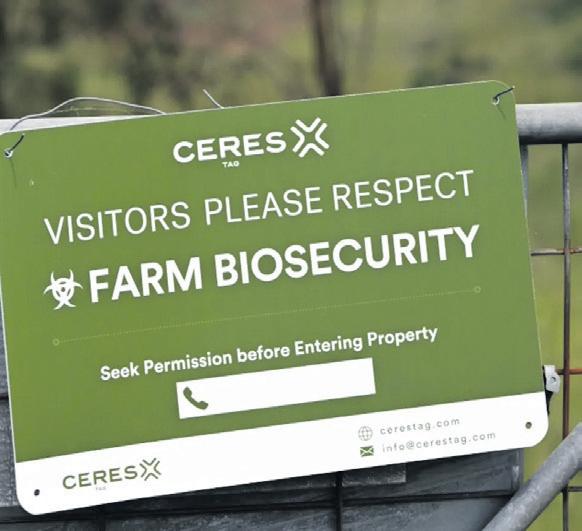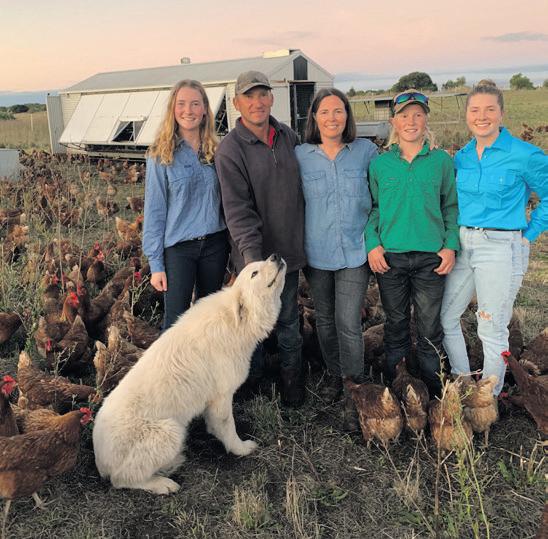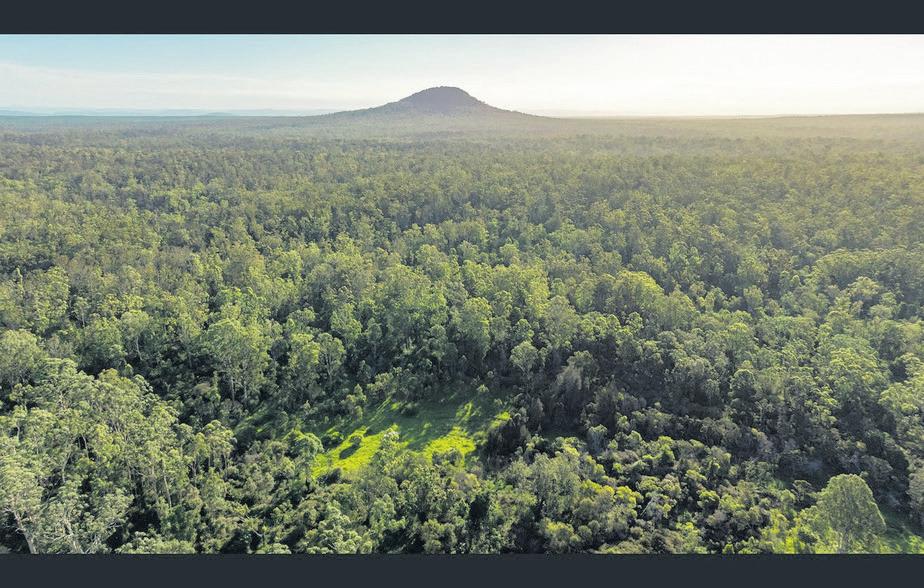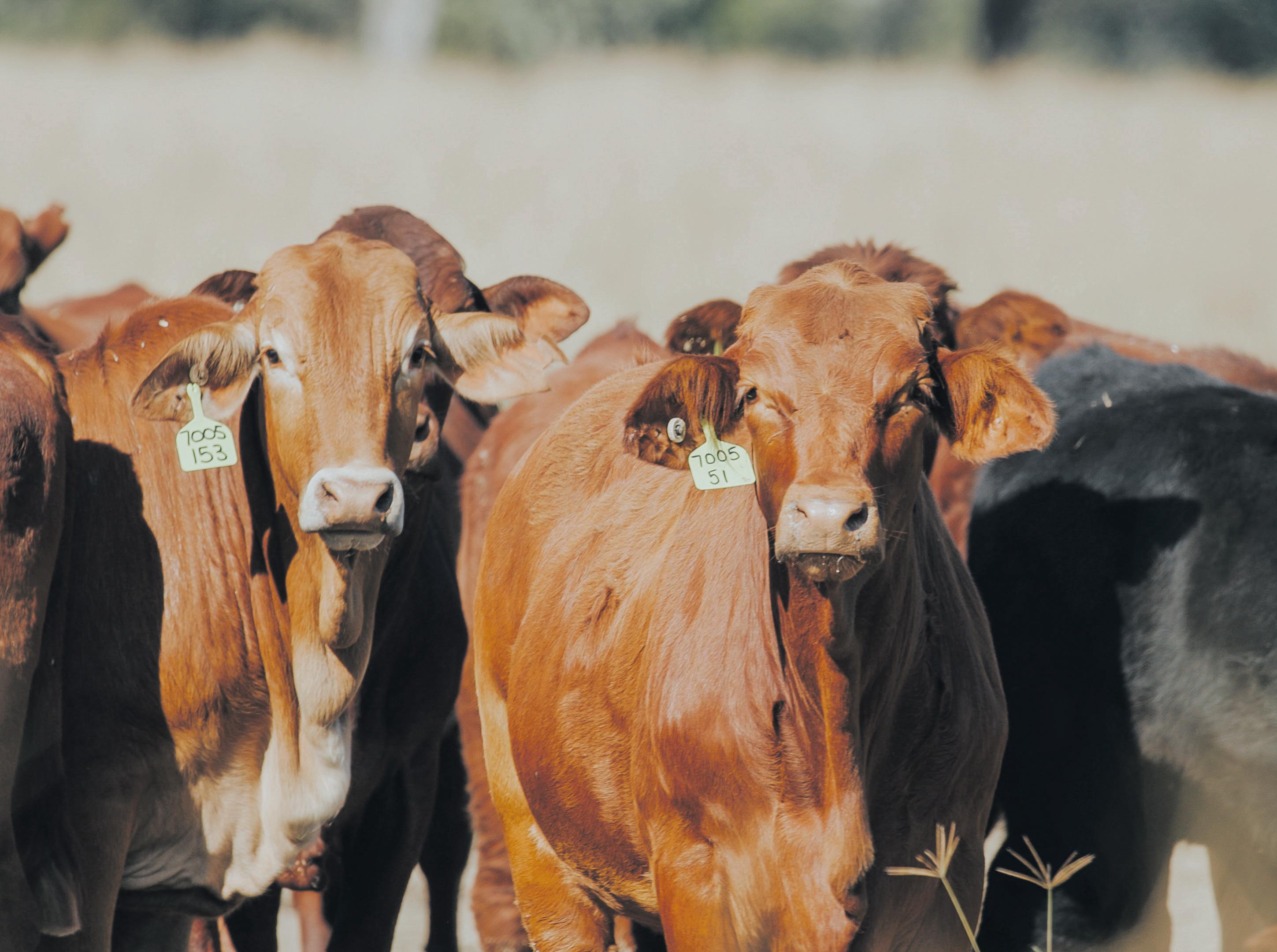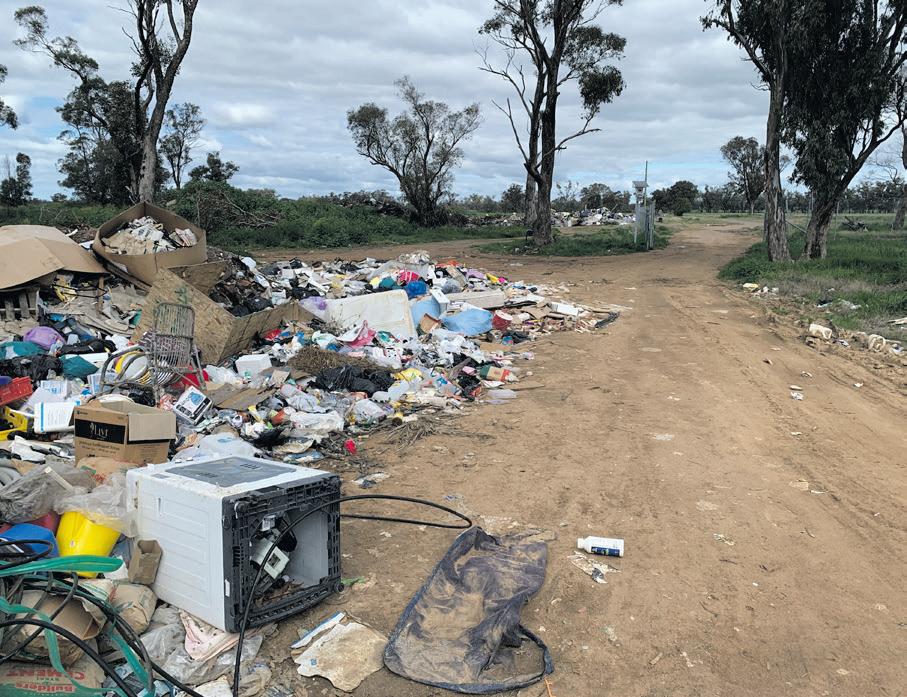
7 minute read
NSW Environment Protection Authority statement:
The Tweed and Weddin Shire Councils have been awarded more than $655,000 in grants as part of food recovery programs being delivered by the NSW Environment Protection Authority (EPA).
New South Wales experienced severe storms and fooding in 2022 around the Hawkesbury River, South Coast, Central West and up to the Queensland border. This led to the generation of signifcant amounts of food debris across NSW and the Australian government declared many parts of NSW a natural disaster area. The EPA has led several clean-up and recovery programs to ensure the generated waste is removed in a safe, effective, and effcient manner.
The grants are being awarded under Round 1 of the Illegal Dumping and Flood Waste Program to help councils cleanup illegally dumped food waste, including asbestos or other hazardous materials, and any remaining food generated waste.
The EPA is encouraging the reuse and recycling of waste where possible as well as the installation of illegal dumping deterrence measures.
The Program follows the EPA’s shoreline clean-up which has already removed more than 24,338 cubic meters of eligible food debris across NSW since the beginning of March last year, which is equivalent to almost 10 Olympic sized swimming pools of debris.
Tweed Shire Council
• Two grants worth $583, 141.
• The frst grant is facilitating the demolition and removal of food damaged structures and clean-up food waste at Reserve Creek Road. Council land, on River Street in Tweed Shire Council, will be turned into a continuation of the green space located along the river, allowing the community to safely use and enjoy the area for recreational activities.
• Their second grant will cover clean-up of other food waste including bulky waste, dumped household waste and natural food debris from the Council owned land.
Weddin Shire Council
• One grant worth
$72 500.
• In Weddin Shire Council food damaged security cameras will be replaced and fencing and locks installed at two waste facilities to prevent illegal dumping.

Quotes from the NSW Environment Protection Authority Director Arminda Ryan: “Communities have experienced tough times in the past couple of years and it is pleasing to be able to move to this next stage of clean-up efforts.”
“Unfortunately, during the troubling food periods some waste was left behind or not disposed of correctly and this is an excellent opportunity to safely remove remaining waste, some of which is hazardous.”
“The EPA’s Illegal
Dumping and Flood Waste Program provides councils with grants to help clean-up this illegally dumped waste and put in place measures to try and prevent future dumping.”
Tweed: “The grants to Tweed Shire Council will help provide the community with greater access to recreational areas and also have great beneft for the local environment.”
Weddin: “The grant to Weddin Shire Council for security cameras and fencing will help reduce Illegal dumping which can be damaging to the environment, health and the local community.”
A Great day out fshing
Jake Mitchell Doody 15 years old from Darwin who loves fshing. Visiting his grandparents in Casino he decided to have a little fsh in their dam using a mussel and caught himself a little EEL had a photo taken, then placed the eel back in the water doing the right thing.

A special Roy Morgan SMS Poll on Australia Day, January 26, shows more than two-thirds of Australians (68.5%) now say the date should stay as ‘Australia Day’ – up 4.5% from a year ago. Only 31.5% (down 4.5%) say January 26 should be called ‘Invasion Day’.
Australians are more evenly split on keeping Australia Day on January 26 with 58.5% saying the date of Australia Day should stay the same while just over two-ffths, 41.5%, say the date should be moved – according to a special Roy Morgan SMS Poll conducted with an Australia-wide cross-section of 1,111 Australians aged 18+ from Wednesday January 17 – Friday January 19, 2024.
People surveyed were told “On January 26, 1788, Captain Arthur Phillip landed at Sydney Cove,” and asked “In your opinion should January 26 be known as Australia Day or Invasion Day?” and “Do you think the date of Australia Day should be moved?”
Over three-quarters of men favour ‘Australia Day’ on January 26; Women are more evenly split A large majority of men favour January 26 staying as ‘Australia Day’ rather than ‘Invasion Day’ by a margin of over 3:1 (76.5% cf. 23.5%) a signifcant change from a year ago (69% cf. 31%).
In contrast, Australia’s women are more evenly split with a majority of 61.5% (up 3.5% points from a year ago) in favour of January 26 being known as ‘Australia Day’ compared to 38.5% (down 3.5% points) saying it should be known as ‘Invasion Day.
In contrast, a large majority of men (67.5%) say the date of Australia Day ‘should not be moved’ and only 32.5% say the date ‘should be moved’. A razor-thin majority of women (50.5%) say the date of Australia Day ‘should be moved’ whereas 49.5% oppose moving the date.
Australians of all ages say January 26 should be known as ‘Australia Day’
Although young people are less likely than their older counterparts to support January 26 staying as ‘Australia Day’, and keeping the date, a majority of Australians of all ages say January 26 should be known as ‘Australia Day’.
Support for saying January 26 should be known as ‘Australia Day’ by age:
• 18-34: 56% ‘Australia Day’ cf. 44% ‘Invasion Day’;
• 35-49: 63.5%
‘Australia Day’ cf. 36.5% ‘Invasion Day’;
• 50-64: 78.5%
‘Australia Day’ cf. 21.5% ‘Invasion Day’;
• 65+: 82.5% ‘Australia Day’ cf. 17.5% ‘Invasion Day’.
A majority of Australians under 50 say the date of Australia Day ‘should be moved’:

• 18-34: 51% ‘Don’t move the date’ cf. 49% ‘Move the date’;
• 35-49: 52.5% ‘Don’t move the date’ cf. 47.5%
‘Move the date’;
• 50-64: 63.5% ‘Don’t move the date’ cf. 36.5% ‘Move the date’;
• 65+: 70% ‘Don’t move the date’ cf. 30% ‘Move the date’.
Opinions about ‘Australia Day’ divide along political lines:
L-NP voters favour ‘Australia Day’, ALP voters are split down the middle and Greens strongly favour ‘Invasion Day’
A large majority of L-NP supporters 90% (up 16% points from a year ago) favour January 26 being known as ‘Australia Day’ compared to only 10% (down 16% points) who say it should be known as ‘Invasion Day’.
ALP supporters are split down the middle on the issue with 50% (down 13% points from a year ago) who favour January 26 being known as ‘Australia Day’ compared to 50% (up 13% points) who say it should be known as ‘Invasion Day’.
In contrast, an increasing majority of Greens supporters are in favour of January 26 being known as ‘Invasion Day’ 89.5% (up 26.5% points from a year ago) rather than
‘Australia Day’ 10.5% (down 26.5% points).
L-NP supporters don’t want to ‘move the date’ while large majorities of ALP & Greens supporters do Only 18.5% of L-NP supporters want to ‘move the date’ of Australia Day while large majorities of ALP supporters (61%) and Greens supporters (94%) want to ‘move the date’ of Australia Day.
Should the date of Australia Day ‘be moved’ by party support:
• L-NP supporters: 81.5% ‘Don’t move the date’ cf. 18.5% ‘Move the date’;
• ALP supporters: 39% ‘Don’t move the date’ cf. 61% ‘Move the date’;
• Greens supporters: 6% ‘Don’t move the date’ cf. 94% ‘Move the date’;
• Independent supporters: 44% ‘Don’t move the date’ cf. 56% ‘Move the date’;
• Other party supporters: 76.5% ‘Don’t move the date’ cf. 23.5% ‘Move the date’.
People in Country Areas far more likely than those in the Capital Cities to say January 26 should be known as ‘Australia Day’ rather than
‘Invasion Day’
A large majority of 79.5% (up 8.5% points from a year ago) of Australians living in Country Areas say January 26 should stay as ‘Australia Day’ compared to 63% (up 4% points) living in Capital Cities.
Clear majorities of Australians in all six States say January 26 should be known as ‘Australia Day’ with the largest proportion in favour living in Tasmania (76%), New South Wales (72%) and Western Australia (71%). The tightest result is in Victoria with 63.5% saying January 26 should be known as ‘Australia Day’.
Support for saying January 26 should be known as ‘Australia Day’ State and Region:
• Capital Cities: 63% ‘Australia Day’ cf. 37% ‘Invasion Day’;
• Country Areas: 79.5% ‘Australia Day’ cf. 20.5% ‘Invasion Day’;
• New South Wales: 72% ‘Australia Day’ cf. 28% ‘Invasion Day’;
• Victoria: 63.5% ‘Australia Day’ cf. 36.5% ‘Invasion Day’;
• Queensland: 70% ‘Australia Day’ cf. 30% ‘Invasion Day’;
• Western Australia: 71% ‘Australia Day’ cf. 29% ‘Invasion Day’;
• South Australia: 64.5% ‘Australia Day’ cf. 35.5% ‘Invasion Day’;
• Tasmania: 76% ‘Australia Day’ cf. 24% ‘Invasion Day’.
People in Country Areas don’t want to ‘move the date’, those in Capital Cities are more evenly split
A large majority of Australians living in Country Areas (68%) say the date of Australia Day ‘should not be moved’ compared to 53.5% of those living in Capital Cities that say the date ‘should not be moved’.
People in most Australian States say no to ‘moving the date’ but a slim majority of West Australians are in favour of ‘moving the date’.
Should the date of Australia Day ‘be moved’ by State & Region:
• Capital Cities: 53.5% ‘Don’t move the date’ cf. 46.5% ‘Move the date’;
• Country Areas: 68% ‘Don’t move the date’ cf. 32% ‘Move the date’;
• New South Wales: 60% ‘Don’t move the date’ cf. 40% ‘Move the date’;
• Victoria: 60% ‘Don’t move the date’ cf. 40% ‘Move the date’;
• Queensland: 64% ‘Don’t move the date’ cf. 36% ‘Move the date’;
• Western Australia: 49.5% ‘Don’t move the date’ cf. 50.5% ‘Move the date’;
• South Australia: 51.5% ‘Don’t move the date’ cf. 48.5% ‘Move the date’;
• Tasmania: 52% ‘Don’t move the date’ cf. 48% ‘Move the date.
This special Roy Morgan Snap SMS survey was conducted with an Australia-wide cross-section of 1,111 Australians aged 18+ from Wednesday January 17 – Friday January 19, 2024. Of those surveyed 5% (up 1%) of respondents suggested neither or something else for the day.

